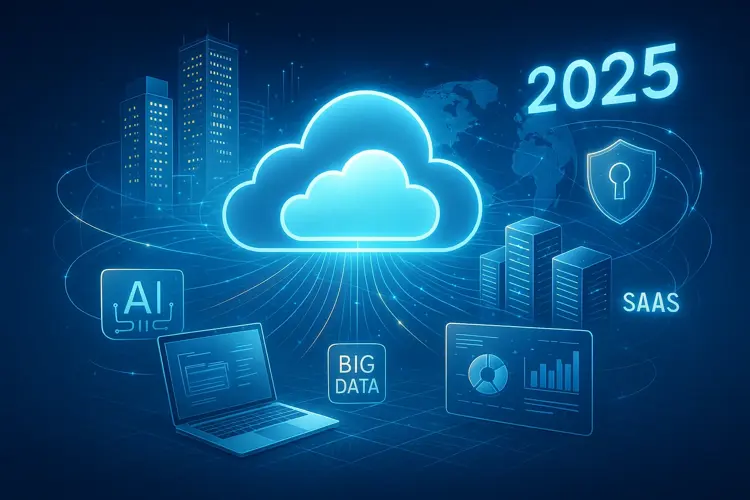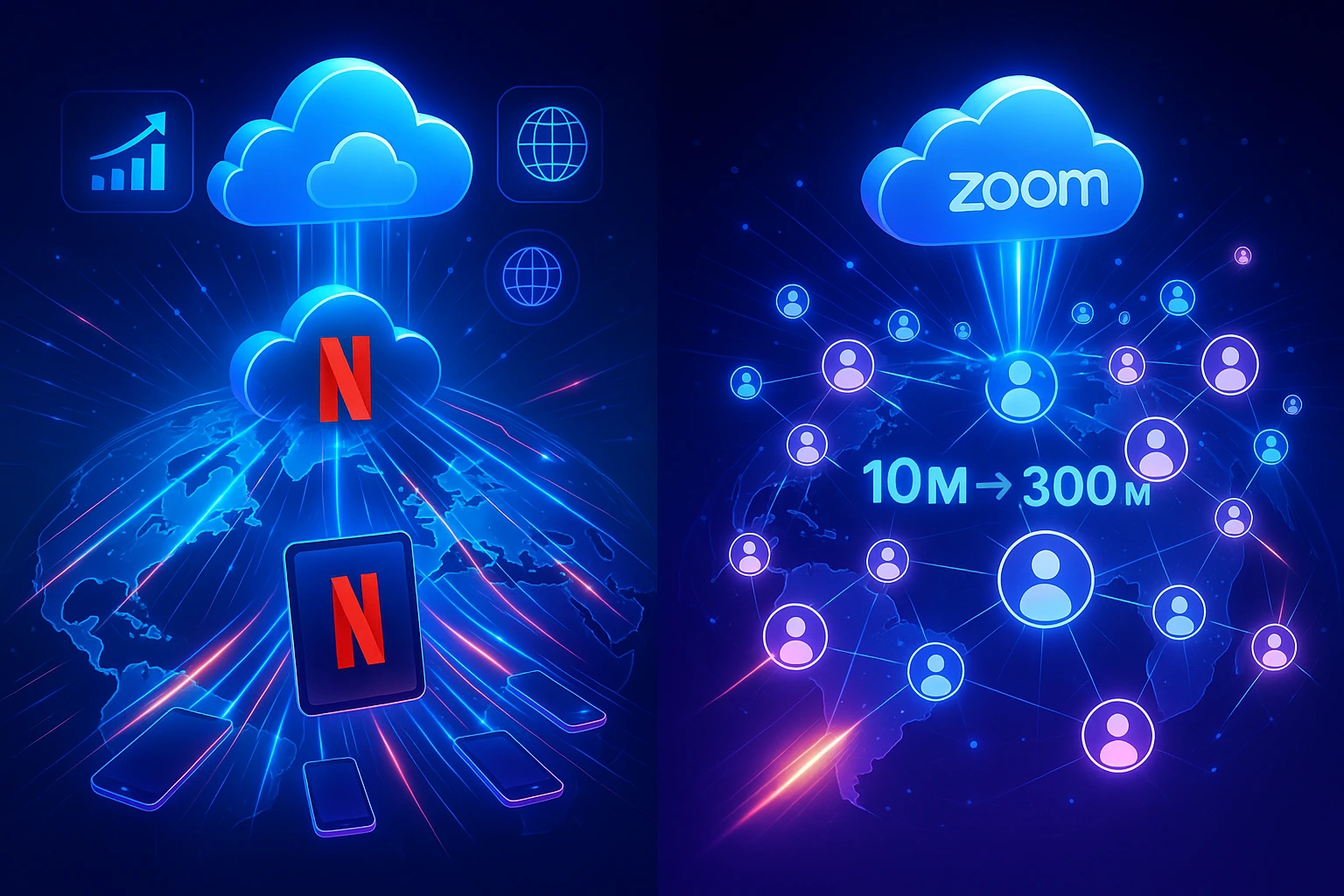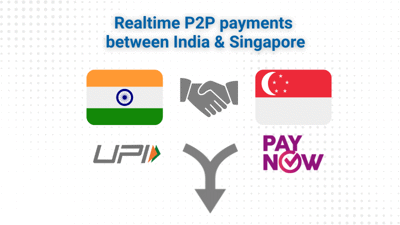Why Cloud-Based Computing Services Are the Game-Changer for Businesses in 2025

The 2025 Digital Shift: Why Businesses Cannot Ignore the Cloud
In 2025, cloud computing will no longer be optional for businesses that want to survive and thrive. Small startups and global enterprises alike are discovering that cloud-based computing services provide the foundation for everything from daily operations to groundbreaking innovation.
The numbers tell the story. More than 94% of enterprises now use cloud services, and spending continues to surge past $600 billion globally. The reason is simple: businesses that embrace cloud computing move faster, spend smarter, and adapt better than their competitors.
The Evolution of Cloud Computing: From Data Centers to Digital Dominance
The Journey from On-Premise to Cloud
Ten years ago, most companies stored everything on physical servers sitting in their own buildings. This meant huge upfront costs, constant maintenance, and limited flexibility.
Understanding Cloud Service Models
Today's cloud computing services come in three main forms:
SaaS vs PaaS vs IaaS represents different levels of control and responsibility:
- Software as a Service (SaaS): Ready-to-use applications like Gmail or Salesforce
- Platform as a Service (PaaS): Development environments where you build custom apps
- Infrastructure as a Service (IaaS): Virtual servers and storage you manage yourself
Modern Cloud Architecture Options
Businesses now choose from several deployment models based on their needs:
Such as Public cloud and private cloud, which offer different trade-offs. Public clouds like Amazon Web Services and Google Cloud provide shared resources at lower costs. Private clouds give you dedicated infrastructure with more control.
The real magic happens with hybrid cloud architecture. This approach combines both worlds, letting businesses keep sensitive data private while using public cloud resources for everything else. It provides flexibility that matches how real companies actually operate. Multi-cloud strategy takes this further by using multiple cloud service providers simultaneously. This prevents vendor lock-in and lets you pick the best tool for each job.

How Cloud Computing Transforms Business Operations in 2025
1. Cost Efficiency and Cloud Scalability
Traditional IT required massive upfront spending on servers that often sat mostly unused. Cloud cost optimization flips this model completely. The pay-as-you-go structure means you only spend money on what you actually use.
Cloud scalability benefits extend beyond just saving cash:
- Converts capital expenses into operating expenses
- Eliminates costs for maintaining physical hardware
- Reduces energy bills from running your own data centers
- Frees up IT staff to focus on innovation instead of maintenance
2. Enhanced Cloud Security and Compliance
Many businesses once feared that cloud data protection meant less security. The opposite proved true. Major cloud service providers invest billions in security that individual companies could never afford.
Enterprise cloud security includes:
- Military grade encryption for data in transit and at rest
- 24/7 monitoring by dedicated security teams
- Automatic security updates and patches
- Advanced threat detection using AI
Cloud compliance has also matured dramatically. Providers now meet strict standards for data governance in the cloud, including GDPR, HIPAA, SOC 2, and industry-specific regulations.
3. Business Continuity and Disaster Recovery Cloud Solutions
Natural disasters, cyberattacks, and hardware failures happen. Companies without proper backups face catastrophic losses. Cloud disaster recovery eliminates this risk.
Cloud disaster recovery plan components include:
- Automatic backups are scheduled throughout the day
- Instant failover to backup systems
- Quick restoration of entire systems
- Testing capabilities to verify recovery works
4. Sustainability and Environmental Impact
Digital transformation with cloud also drives environmental responsibility. Moving to cloud infrastructure reduces your carbon footprint significantly.
Cloud computing examples of sustainability include:
- Shared resources mean higher efficiency per user
- Hyperscale data centers optimize energy usage
- Renewable energy powers many major cloud facilities
- Reduced electronic waste from obsolete hardware
Companies pursuing green initiatives find that cloud migration aligns perfectly with sustainability goals while also cutting costs.
Real World Success: How Businesses Win with Cloud

- Netflix transformed entertainment by building entirely on AWS. Their cloud migration strategy enabled them to stream to 230 million subscribers globally without owning a single server.
- Zoom became the meeting platform for the world during the pandemic. Their infrastructure on cloud platforms scaled from 10 million to 300 million daily participants in months. No traditional setup could have handled that growth.
The Future of Cloud Computing: What Comes Next
1. AI Integration Becomes Standard
In 2025, AI is no longer an optional add-on; it becomes a core part of how businesses operate. Every software, tool, and cloud platform is now infused with AI capabilities. From writing and analysis to design, automation, and decision-making, AI quietly works in the background to make tasks faster, smarter, and more accurate.
Earlier, only large enterprises had access to such advanced AI systems. But cloud-based AI platforms are changing this. Now, even small businesses can use the same powerful tools that tech giants use. This democratization of AI means higher productivity, better customer experiences, and more innovation across every industry.
2. Edge and Cloud Convergence
The boundary between edge computing and centralized cloud will blur. Processing will happen wherever it makes most sense, seamlessly coordinated across locations.
Traditionally, data was either processed in the cloud or at the edge (like local devices, sensors, or machines). In 2025, this boundary disappears.
Edge and cloud computing now work together seamlessly. Processing happens wherever it makes the most sense:
- Edge handles real-time tasks (like IoT sensors, autonomous machines, or smart retail devices).
- Cloud handles deep analytics, large storage, and high-power AI models.
This convergence allows businesses to deliver faster experiences, reduce downtime, and improve accuracy. especially for industries like healthcare, manufacturing, logistics, and smart cities. Instead of choosing between cloud and edge, businesses now enjoy the best of both worlds.
3. Quantum Computing Integration
While still emerging, quantum computing through the cloud will solve problems impossible for traditional computers. Drug discovery, financial modeling, and optimization challenges will benefit first.
Quantum computing is still early, but 2025 marks the beginning of its entry into cloud platforms. Instead of buying expensive quantum hardware, businesses can access quantum capabilities through cloud-based services.
Cloud access to quantum power means researchers, enterprises, and startups can experiment with quantum-accelerated solutions without huge investments. The businesses that start early will gain a competitive edge as quantum technology matures in the coming years.
Conclusion
Cloud-based computing services have moved beyond a technology trend to become a business necessity. Companies that embrace the cloud gain speed, flexibility, and capabilities that seemed impossible just years ago.
Businesses face a clear choice in 2025. Embrace cloud solutions for business and position yourself for whatever comes next. Or cling to outdated approaches and watch competitors pull ahead.
Your competitors are already making the shift. The time to act is now.


















